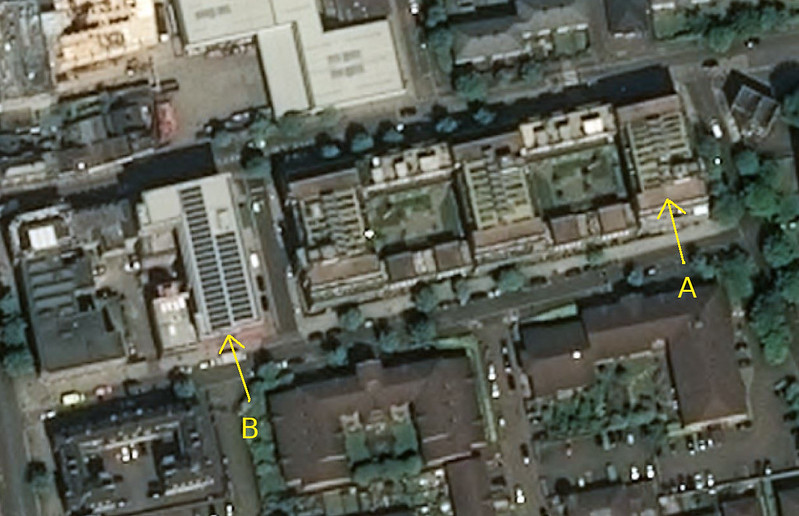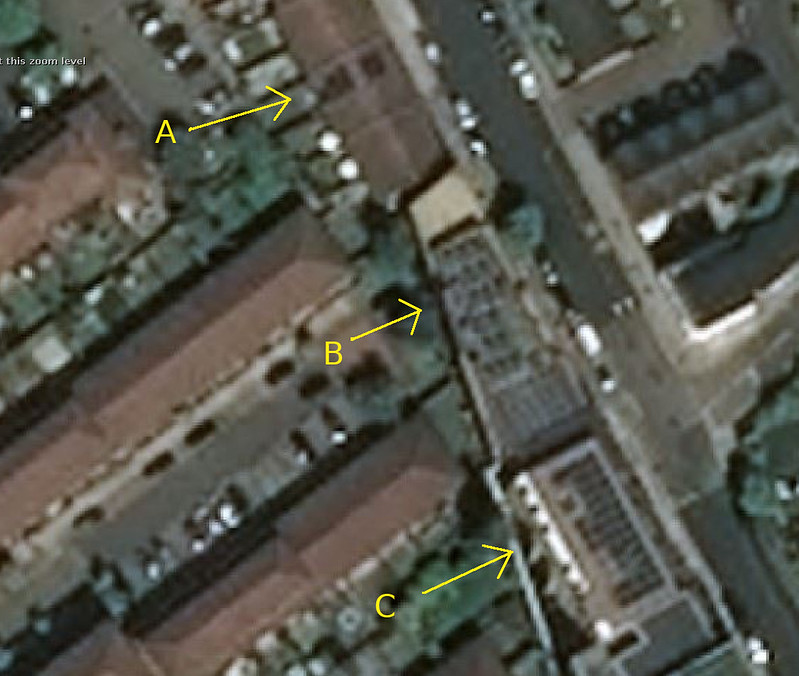Cross posted from mcld.co.uk
On Wednesday we had a “flagship seminar” from Prof Andy Hopper on Computing for the future of the planet. How can computing help in the quest for sustainability of the planet and humanity?
Lots of food for thought in the talk. I was surprised to come out with a completely different take-home message than I’d expected - and a different take-home message than I think the speaker had in mind too. I’ll come back to that in a second.
Some of the themes he discussed:
- Green computing. This is pretty familiar: how can computing be less wasteful? Low-energy systems, improving the efficiency of computer chips, that kind of thing. A good recent example is how DeepMind used machine learning to reduce the cooling requirements of a Google data centre by 40%. 40% reductions are really rare. Hopper also have a nice example of “free lunch” computing - the idea is that energy is going unused somewhere out there in the world (a remote patch of the sea, for example) so if you stick a renewable energy generator and a server farm there, you essentially get your computation done at no resource cost.
- Computing for green, i.e. using computation to help us do things in a more sustainable way. Hopper gave a slightly odd example of high-tech monitoring that improved efficiency of manufacturing in a car factory; not very clear to me that this is a particularly generalisable example. How about this much better example? Open source geospatial maps and cheap new tools improve farming in Africa. “Aerial drones, crowds of folks gathering soil samples and new analysis techniques combine as pieces in digital maps that improve crop yields on African farms. The Africa Soil Information Service is a mapping effort halfway through its 15-year timeline. Its goal is to publish dynamic digital maps of all of Sub-Saharan Africa at a resolution high enough to serve farmers with small plots. The maps will be dynamic because AfSIS is training people now to continue the work and update the maps.” - based on crowdsourced and other data, machine-learning techniques are used to create a complete picture of soil characteristics, and can be used to predict where’s good to farm what, what irrigation is needed, etc.
* While we’re on the subject of computing-for-green - have a look at Jack Kelly’s excellent list of tips Climate change mitigation for hackers
Then Hopper also talked about replacing physical activities by digital activities (e.g. shopping), and this led him on to the topic of the Internet, worldwide sharing of information and so on. He argued (correctly) that a lot of these developments will benefit the low-income countries even though they were essentially made by-and-for richer countries - and also that there’s nothing patronising in this: we’re not “developing” other countries to be like us, we’re just sharing things, and whatever innovations come out of African countries (for example) might have been enabled by (e.g.) the Internet without anyone losing their own self-determination.
Hopper called this “wealth by proxy”… but it doesn’t have to be as mystifying as that. It’s a well-known idea called the commons.
The name “commons” originates from having a patch of land which was shared by all villagers, and that makes it a perfect term for what we’re considering now. In the digital world the idea was taken up by the free software movement and open culture such as Creative Commons licensing. But it’s wider than that. In computing, the commons consists of the physical fabric of the Internet, of the public standards that make the World Wide Web and other Internet actually work (http, smtp, tcp/ip), of public domain data generated by governments, of the Linux and Android operating systems, of open web browsers such as Firefox, of open collaborative knowledge-bases like Wikipedia and OpenStreetMap. It consists of projects like the Internet Archive, selflessly preserving digital content and acting as the web’s long-term memory. It consists of the GPS global positioning system, invented and maintained (as are many things) by the US military, but now being complemented by Russia’s GloNass and the EU’s Galileo.
All of those are things you can use at no cost, and which anyone can use as bedrock for some piece of data analysis, some business idea, some piece of art, including a million opportunities for making a positive contribution to sustainability. It’s an unbelievable wealth, when you stop to think about it, an amazing collection of achievements.
The surprising take-home lesson for me was: for sustainable computing for the future of the planet, we must protect and extend the digital commons.
This is particularly surprising to me because the challenges here are really societal, at least as much as they are computational.
There’s more we can add to the commons; and worse, the commons is often under threat of encroachment. Take the Internet and World Wide Web: it’s increasingly becoming centralised into the control of a few companies (Facebook, Amazon) which is bad news generally, but also presents a practical systemic risk. This was seen recently when Amazon’s AWS service suffered an outage. AWS powers so many of the commercial and non-commercial websites online that this one outage took down a massive chunk of the digital world. As another example, I recently had problems when Google’s “ReCAPTCHA” system locked me out for a while - so many websites use ReCAPTCHA to confirm that there’s a real human filling in a form, that if ReCAPTCHA decides to give you the cold shoulder then you instantly lose access to a weird random sample of services, some of those which may be important to you.
Another big issue is net neutrality. “Net neutrality is like free speech” and it repeatedly comes under threat.
Those examples are not green-related in themselves, but they illustrate that out of the components of the commons I’ve listed, the basic connectivity offered by the Internet/WWW is the thing that is, surprisingly, perhaps the flakiest and most in need of defence. Without a thriving and open internet, how do we join the dots of all the other things?
But onto the positive. What more can we add to this commons? Take the African soil-sensing example. Shouldn’t the world have a free, public stream of such land use data, for the whole planet? The question, of course, is who would pay for it. That’s a social and political question. Here in the UK I can bring the question even further down to the everyday. The UK’s official database of addresses (the Postcode Address File) was… ahem… was sold off privately in 2013. This is a core piece of our information infrastructure, and the government - against a lot of advice - decided to sell it as part of privatisation, rather than make it open. Related is the UK Land Registry data (i.e. who owns what parcel of land) which is not published as open data but is stuck behind a pay-wall, all very inconvenient for data analysis, investigative journalism etc.
We need to add this kind of data to the commons so that society can benefit. In green terms, geospatial data is quite clearly raw material for clever green computing of the future, to do good things like land management, intelligent routing, resource allocation, and all kinds of things I can’t yet imagine.
As citizens and computerists, what can we do?
- We can defend the free and open internet. Defend net neutrality. Support groups like the Mozilla Foundation.
- Support open initiatives such as Wikipedia (and the Wikimedia Foundation), OpenStreetMap, and the Internet Archive. Join a local Missing Maps party!
- Demand that your government does open data, and properly. It’s a win-win - forget the old mindset of “why should we give away data that we’ve paid for” - open data leads to widespread economic benefits, as is well documented.
- Work towards filling the digital commons with ace opportunities for people and for computing. For example satellite sensing, as I’ve mentioned. And there’s going to be lots of drones buzzing around us collecting data in the coming years; let’s pool that intelligence and put it to good use.
If we get this right, 20 years from now our society’s computing will be green as anything, not just because it’s powered by innocent renewable energy but because it can potentially be a massive net benefit - data-mining and inference to help us live well on a light footprint. To do that we need a healthy digital commons which will underpin many of the great innovations that will spring up everywhere.





